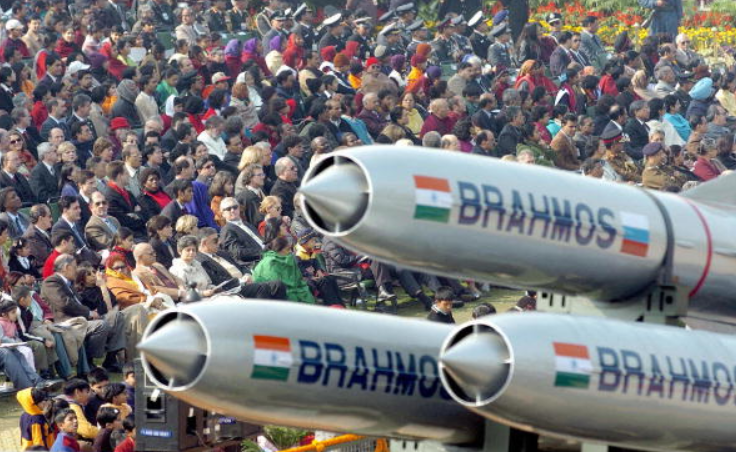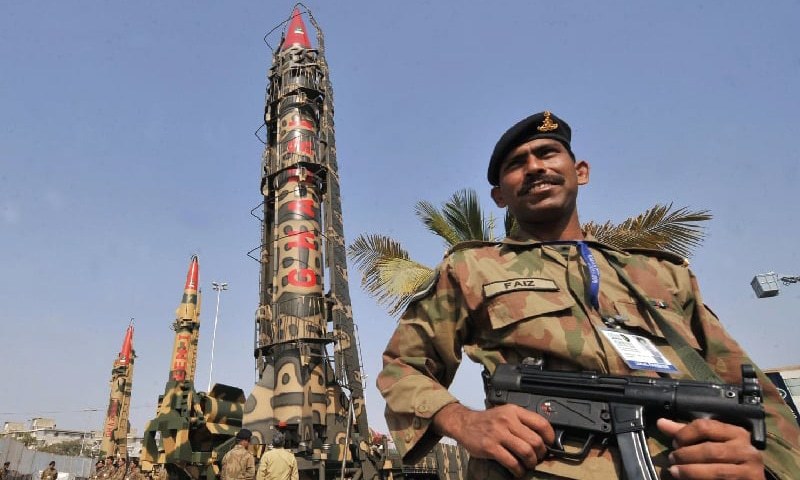Abdul Moiz Khan, Usman Haider

On January 27, 2023, India tested its Hypersonic Technology Demonstration Vehicle (HSTDV) for the third time and later successfully tested the ‘Agni Prime’ missile off the coast of Odisha in June. Three months later, India tested extended-range (ER) BrahMos missiles from all three ground, air, and naval platforms. These tests were coupled with Indian advancements in indigenous ballistic missile defense systems (BMDs) and the deployment of newly purchased S-400s from Russia along Pakistan’s borders. Although India has a No-First Use policy on paper, its recent missile tests and the development of BMD capabilities signals that India is moving towards a counterforce strategy with an objective to disarm Pakistan with a comprehensive first strike.
Overall, in 2023, India conducted eleven missile tests while Pakistan undertook two in a likely response. In October, Islamabad tested two medium-range ballistic missiles (MRBMs): Ghauri and Ababeel. The latter is a multiple-independent targetable re-entry vehicle (MIRV) technology, seen as a cost-effective solution to counter India’s BMD. From Pakistan’s perspective, its recent missile tests are a necessary response to ensure deterrence credibility in light of India’s missile technology advancements and perceived offensive posture. India’s missile tests and its comprehensive first strike contemplations are irresponsible in light of present dynamics and may fuel further instability in the region.
India’s missile tests and its comprehensive first strike contemplations are irresponsible in light of present dynamics and may fuel further instability in the region.
Indian Missile Tests
HSTDVs
India has indigenously developed hypersonic technology demonstrator vehicles (HSTDVs) since 2019, with the latest test conducted earlier last year. Pakistan perceives India’s development of hypersonic weapons as a counterforce tool because of their precision capabilities, speed, and maneuverability, making them difficult to intercept. HSTDVs can achieve speeds up to six times the speed of sound because of the scramjet engine technology they use.
The Indian decision to develop HSTDVs is indicative of an escalating threat for Pakistan. India and Pakistan share a long border, making supersonic and hypersonic weapons very effective in a theoretical first strike against Pakistan. For a ballistic missile, travel time is only a few minutes, but with a hypersonic capability, India further reduces its missile delivery time to less than one minute for targets within a 250 mile range. Thus, if India successfully develops hypersonic technology, it can severely challenge the delicate balance of India-Pakistan deterrence stability.
Agni-P
Agni-P is distinct from earlier systems because it can fire on short notice. The missile is encapsulated in a canister, which allows India to keep the warhead permanently mated with the delivery system, increasing the readiness of Indian strategic forces. Permanently mating the warhead with the delivery system minimizes the time it would take to launch the missile during a crisis from hours to minutes. In addition, the system has a Circular Error Probable of just ten meters, which makes it capable of targeting and destroying silos, command and control centers, underground facilities, and strategic missile bases. It is a solid-fueled nuclear-capable MRBM with a range of 600-1200 miles.
By employing this technology, India can hit targets anywhere within Pakistan — enough to launch a counterforce strike. The Agni-P has been successfully tested several times and the system is ready to be inducted into service. Combined, these capabilities make the Agni-P an effective counterforce weapon and contribute to Pakistan’s perception of Indian strategy moving toward a comprehensive first strike and nuclear warfighting posture. Such missile developments by India may increase the likelihood of miscalculation or rapid escalation.
BrahMos
This dual-capable standoff missile has an extended range that will be able to strike deep into Pakistan by evading Pakistan’s current air defense systems, consequently changing the existing deterrence equation. Pakistan possesses the Ly-80, Spada-2000, and the latest Hq-9 to counter aerial threats, but precisely countering supersonic cruise missiles like BrahMos is challenging. India increased the range of its nuclear-capable supersonic cruise missiles from 180 miles to 310 miles while improving accuracy using an active radar seeker. India accidentally launched the BrahMos missile in March 2022, claiming a “technical malfunction,” and has now test-fired the missile from all three platforms – naval, ground, and air – which further contributes to Pakistan’s perception of the missile as a statement of offensive capability.

Indian Ballistic Missile Defense Systems
India’s improved BMD systems have driven the perception in Islamabad that the systems are intended to protect India after the launch of a comprehensive first strike. If this were to happen, New Delhi could hope to intercept Pakistan’s remaining missiles with their BMD systems.
India is indigenously developing a two-tiered ballistic missile defense system that has completed Phase I and begun Phase II trials. India successfully conducted a flight trial of its sea-based endo-atmospheric interceptor missile on April 21, 2023. While India is investing in its indigenous BMD systems, it is also purchasing from foreign suppliers. As of March 2, 2023, New Delhi signed a contract with Russia to deliver five S-400 systems, three of which have already been delivered.
It is notable that the very first deployment of the S-400 systems was in Punjab, near the border with Pakistan, while the third system will be deployed in Rajasthan, again in close proximity to Pakistan’s border. Both locations were chosen strategically to neutralize aerial threats as soon as they are air borne from Pakistan’s key air bases in Punjab and Sindh. Though the Indian military has publicized these deployments as intended to counter both Pakistan and China (a hedge against the “two front threat”), Pakistani analysts remain skeptical of this claim. By deploying two out of three missile launchers and radar systems so close to the Pakistani border during a time of relative peace between the countries, instead of in Ladakh, where it would counter both Pakistan and China, there is a perception in Islamabad that the two-front threat claim is a red herring and Pakistan is the primary target.
The advancement in Indian delivery systems’ strike capabilities, along with BMD systems to intercept adversaries missiles, creates a temptation for New Delhi to launch a “comprehensive first strike” despite its no-first use policy on paper.
Pakistan’s Response
The ever-evolving Indian BMD capabilities and their deployment near the Pakistan border have raised Islamabad’s threat perceptions, compelling it to take measures to ensure the credibility of its deterrent forces. In 2023, Pakistan conducted a successful training launch of Ghauri MRBM and a second test of its MIRV-capable missile Ababeel, after a gap of six years. According to the Pakistan military’s media wing, the ISPR, the test was conducted to revalidate the various designs, technical parameters, and performance evaluations of different sub-systems.
Given India’s recent nuclear force modernizations and the implications they have for India’s move from a counter-value to a counter-force strategy, Pakistan is exploring cost-effective options for ensuring the reliability and survivability of its nuclear forces while strictly following its policy of Full Spectrum Deterrence under the dictum of Credible Minimum Deterrence. The MIRV technology of Ababeel can help Pakistan in penetrating Indian BMD systems and crucially raise the cost of a comprehensive first-strike capability. These missile systems are thus being developed to improve the quality of Pakistan’s nuclear deterrence in light of India’s recent missile technology advancements.
Indian analysts have admitted to the weakening of the No First Use policy but have argued that New Delhi’s shift towards first use is justified because Pakistan also has the same policy. However, Pakistan has a “first use in last resort” policy, which means that Islamabad intends to use nuclear weapons only if the Indian conventional military is about to overwhelm Pakistan’s conventional forces.
The Road Ahead
India’s apparent move towards offensive doctrines, its contemplation of first-use strategies, and irresponsible statements by Indian leaders have the potential to fuel instability in the region. The advancement in Indian delivery systems’ strike capabilities, along with BMD systems to intercept adversaries missiles, creates a temptation for New Delhi to launch a “comprehensive first strike” despite its no-first use policy on paper. Such actions create a “use-it or lose-it” dilemma for Pakistan in future crises: to use the weapons first, because if not, the enemy will destroy them. Pakistan’s tests, while some analysts perceive them as escalatory, are instead a restrained response to Indian missile tests because they are in line with Pakistan’s policy of Credible Minimum Deterrence and are intended to preserve the strategic stability of the region. India’s recent missile technology developments compel Pakistan to take measures toward ensuring the credibility of its deterrent and restoring stability to the relationship.
No comments:
Post a Comment